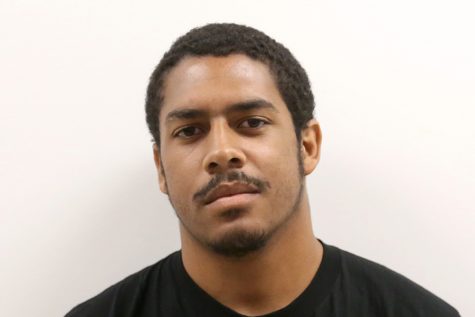Disability flick offers insight on learning disability
Oct 26, 2017
Understanding the struggles students with learning disabilities face on a daily basis in the classroom was the topic of a film shown as a part the Disability Awareness Month film series.
Monday in LLRC-107, Learning Disabilities Specialist Elaine Gerber hosted the third film in this month’s film series titled “Understanding Learning Disabilities: How Difficult Can This Be?”
Gerber said she picked the film because it is useful in helping people understand learning disabilities when they aren’t visual or clearly evident.
“With learning disabilities it’s easy to say, ‘Well you look fine. I don’t see a problem.’”
According to the Learning Disabilities Association of America, learning disabilities are neurologically-based processing problems.
These problems can interfere with learning basic skills such as reading, writing and math.
The documentary focuses on an exercise performed by Dr. Richard Lavoie called the F.A.T. city workshop. F.A.T is an acronym for “Frustration, Anxiety, Tension.”
He brought together social workers, developmental psychologists, teachers and parents of children with learning disabilities to participate.
Dr. Lavoie puts into practice several methods showing others how a learning disability hinders performance. One of the methods he uses during the film is teaching the class at a fast pace, intentionally making it hard for people to keep up.
His rationale is that some students with learning disabilities take longer to process information in class. So, while they do understand the content, it takes more time.
Sometimes, when the class moving at a normal pace it appears to be moving faster.
In the documentary, Lavoie said lack of motivation is often blamed when it comes to students with learning disabilities. However, their stumbling blocks have little to do with motivation and are more connected to perception and needing time to understand.
Gerber said students with learning dis- abilities often just need more time, along with after class individualized attention, to understand the material. Once they get the help they understand the content.
Nursing major Kenya Boyd said the section she related to the most was needing more time to understand material. She said the classroom environment can be too quick and she learns best with one-on-one instruction and demonstration.
One of the last exercises Lavoie uses in the film is to demonstrate the struggles that students with dyslexia face by presenting the class with a paragraph of words mixing up the letters q, p, d, b.
The readers were much slower and struggled to understand. They also almost unanimously said they felt “tired” after reading.
Lavoie said that exhaustion is a real factor in students who may have learning disabilities because students have to focus hard on what is written instead of spending the majority of the time processing and retain- ing what the words mean.
African-American studies and psychology major Stacie Butler said she attended the film screening because professor Carolyn Hodge offered extra credit to her class.
“I’m happy I came,” she said.
Butler said she wants to go into develop- mental psychology and learning about how people learn and the different struggles they face gives her a broad perspective.
“I see some of the learning difficulties with my little sister and even slight learning difficulties can make the classroom experience stressful,” she said.
Gerber said the film was made over 20 years ago, before computers and mobile technology was as advanced as they are now.
She said modern technology has made learning more accessible for students with learning disabilities.
The Disability Awareness Film Series continues with three more films this month in LLRC-107. “Autism in America” is showing today from 3-4:45 p.m.
“Service: When Women Come Marching Home” will be screening on Oct. 24 from 3:15-4:30 p.m.
The final film in the series is “Lives Worth Living” on Oct. 26, from 12:30-2 p.m. Gerber said the film series is valuable for raising awareness about everyday issues people with disabilities face.
“Even if someone falls and breaks their arm and has a temporary disability their whole world changes,” she said.


